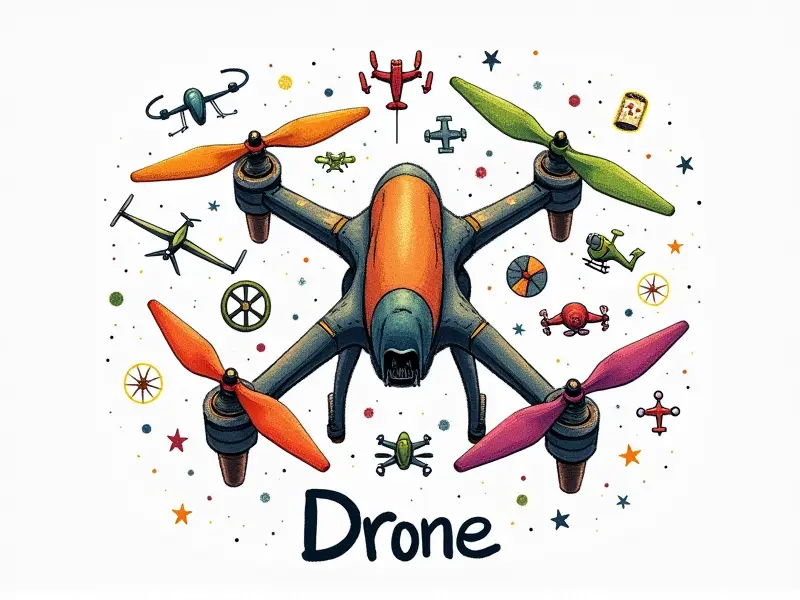Battery connector standards?

Understanding RC Drone Battery Connector Standards
Battery connector standards are crucial for ensuring the safe and efficient operation of remote-controlled (RC) vehicles such as drones, airplanes, and helicopters. These standards dictate the type, size, and electrical specifications of battery connectors used in different models of RC devices.
Connector types vary widely depending on the specific requirements of each vehicle, including power output, current capacity, and mechanical durability. Understanding these standards is essential for hobbyists looking to optimize their RC setups.
Choosing the Right Battery Connector for Your Quadcopter
Selecting the appropriate battery connector for your quadcopter is vital for performance optimization. Several factors come into play when choosing a connector, such as:
- Current Capacity: Ensure the connector can handle the high current draw of your motors.
- Mechanical Durability: Choose connectors that are robust and resistant to wear from repeated use.
- Weight: Opt for lightweight connectors to maximize flight time and maneuverability.
Popular connector types include XT60, Tamiya, and Deans Ultra Plugs. Each offers unique advantages in terms of current handling, ease of installation, and durability.
Common RC Airplane Battery Connector Types Explained
RC airplanes have distinct requirements for battery connectors due to their larger size and higher power demands compared to smaller drones. Common connector types used in RC airplanes include:
- Tamiya Connectors: Widely used for low to medium current applications.
- JST-XH Connectors: Suitable for high-current circuits and have a locking mechanism.
- SERVO Connectors: Used primarily in older models but still found in some modern setups.
The choice of connector depends on the specific needs of your aircraft, such as motor power requirements and desired flight duration.
Why Standardized Battery Connectors Matter in RC
Standardization of battery connectors is critical for several reasons:
- Compatibility: Ensures that batteries from different manufacturers can be used interchangeably.
- Safety: Reduces the risk of electrical failures due to mismatched or faulty connections.
- Efficiency: Streamlines the process of swapping and charging batteries, enhancing overall usability.
Adhering to standardized connector types simplifies maintenance and enhances reliability for RC enthusiasts.
Maximizing Flight Time with Efficient Battery Connectors
The efficiency of battery connectors plays a significant role in determining the flight time of your RC vehicle. Key considerations include:
- Contact Resistance: Low-resistance connections minimize power loss and heat generation.
- Current Handling Capacity: High-capacity connectors ensure that all available battery power is utilized effectively.
Selecting the right connector can significantly improve performance, allowing for longer flight times and better overall operation.
Quick Guide to RC Helicopter Battery Connectors
RC helicopters require specialized battery connectors due to their unique power requirements. Common types include:
- Tamiya Connectors: Suitable for lower current applications but not recommended for high-power setups.
- JST-XH Connectors: Ideal for higher current demands and provide secure locking mechanisms.
Proper selection ensures optimal performance and reliability in RC helicopter operations.
The Importance of Reliable Battery Connectors in RC
A reliable battery connector is essential to prevent catastrophic failures during flight. Key factors include:
- Durability: Connectors must withstand repeated use without degrading or breaking.
- Voltage and Current Ratings: Ensure the connector can handle the specified electrical requirements of your RC vehicle.
A well-chosen connector enhances safety and prolongs the lifespan of your equipment.
Top Battery Connectors for FPV Racing Drones
FPV racing drones demand high-performance battery connectors due to their extreme power demands. Popular choices include:
- T-Plug Connectors: Known for high current handling and durability.
- XT60 Connectors: Widely used in the FPV community for their reliability and ease of use.
Selecting a top-tier connector ensures superior performance during intense racing conditions.
Common Issues with RC Airplane Battery Connectors
Battery connectors can encounter various issues that affect performance:
- Contact Corrosion: Leads to poor electrical connections and reduced power delivery.
- Mechanical Wear: Over time, repeated insertion and removal wear down the connector's integrity.
Awareness of these issues helps in maintaining optimal performance through regular maintenance and replacement as needed.
Best Practices for RC Airplane Battery Connectors
To ensure longevity and reliability of battery connectors:
- Clean Connections: Regularly clean contacts to remove corrosion and debris.
- Proper Handling: Handle connectors carefully to avoid bending or damaging pins.
Adopting these practices prolongs the lifespan of your battery connections, ensuring consistent performance over time.
Exploring Micro Connectors for Mini Quadcopters
Mini quadcopters benefit from lightweight and compact connectors to enhance maneuverability:
- JST-PH Connectors: Small yet robust, ideal for mini quads with limited space.
- Micro Tamiya Connectors: A smaller version of the standard Tamiya connector, suitable for low-current applications in mini quadcopters.
Selecting the right micro connector optimizes performance and efficiency in miniature RC setups.
Conclusion
Battery connector standards are fundamental to the safe and efficient operation of remote-controlled vehicles. By understanding the specific requirements for different types of RC devices, hobbyists can make informed decisions when selecting battery connectors. Choosing reliable and high-performance connectors not only enhances flight time but also ensures long-term durability and safety.

